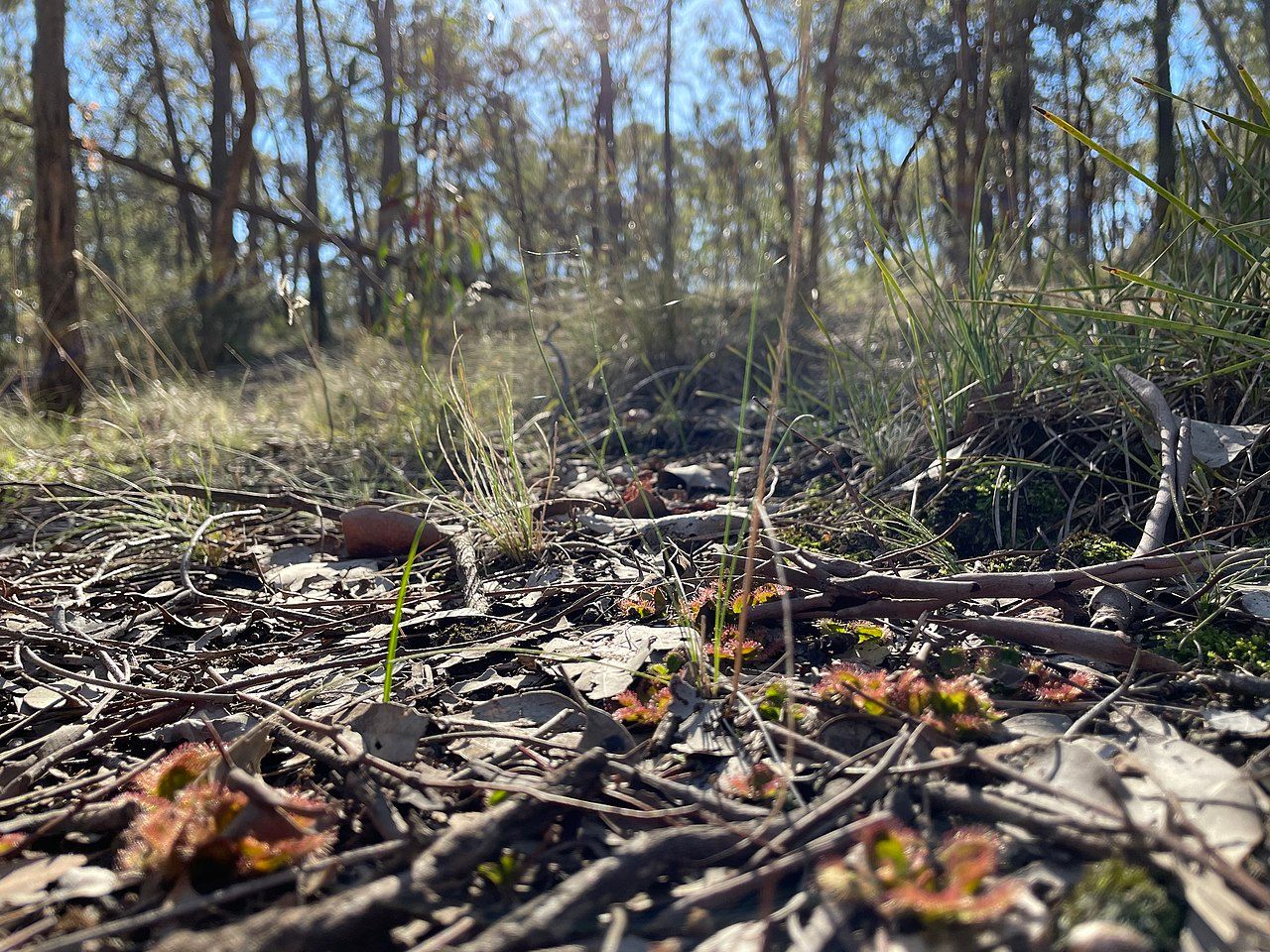Home/Curriculum resources/Interdependence in the environment/Activity- Understanding local fire management plans
Learning Area:
Science
Year level:
Level 9

Activity- Understanding local fire management plans
This activity is a part of the Interdependence in the environment resource.
Drosera Aberrans. Bendigo National Park, Victoria. Dja Dja Wurrung and Taungurung country. Photographer: Luigi Vetrano. Source: Wikimedia Common. Licence: CC BY-SA 4.0.
Students will construct interdependency diagrams to model local ecosystem interactions, research diverse land management practices, recommend a suitable strategy for their region, and illustrate its projected impact.
Suggested resource for teacher background Three things I know about fire management | The Drum - YouTube
Step by step guide
Step 1: Create an interdependency diagram to model a local ecosystem
Students can investigate the species present in their local ecosystem using an online tool, such as “Explore your area” tool through the Atlas of Living Australia or through field studies. Students can list the dominant organisms present in their local ecosystem and construct an interdependency diagram to demonstrate the interrelationships between these organisms. Have students search for an example of an interdependence map, an example of interdependency maps can be seen in ‘How Fires Affect Biodiversity’ 0
Step 2: Small group discussion
Students should discuss the following inquiry-based questions in small groups:
Which species in your interdependency diagram were you already familiar with?
Have you encountered them in your local ecosystem?
Which interrelationship between two species most surprised you? Why?
Consider the effects if one of these species was to become extinct.
Step 3: Investigate the fire management practices for an ecosystem
Students should investigate the fire management practices that are advised for their specific ecosystem to inform a recommendation for their local area. Teachers should be aware that Aboriginal and Torres Strait Islander Peoples’ knowledge of fire management practices are intrinsically linked to the local environment. Many land councils have their own fire management practices, that may differ from those provided, the table below provides a range of available information for more general fire management strategies. Students can use the fire management practice information from their local area to inform a recommendation for the most appropriate fire management strategy and justify their rationale.
Students can then evaluate the impact the fire management recommendation will have on the ecosystem through a second inter-dependency model, predicting the changes to the ecosystem with the implementation of the fire management recommendation.
State/Territory/Region | Link | Page |
|---|---|---|
NSW | Guidelines for ecologically sustainable fire management (NSW Biodiversity Strategy) | Page 34 |
QLD | Use spreadsheet with benchmark areas | |
SA | Ecological Fire Management Guidelines (Government of South Australia) | Page 28 |
TAS | Page 6 | |
Tropical Savannah | Gulf Savannah Fire Management Guidelines (Carpentaria Land Council Aboriginal Corporation) | Biome Specific |
VIC | Page 29 | |
WA | Guiding principles for fire management in the Western Australian rangelands (Rangelands NRM) | Region specific |